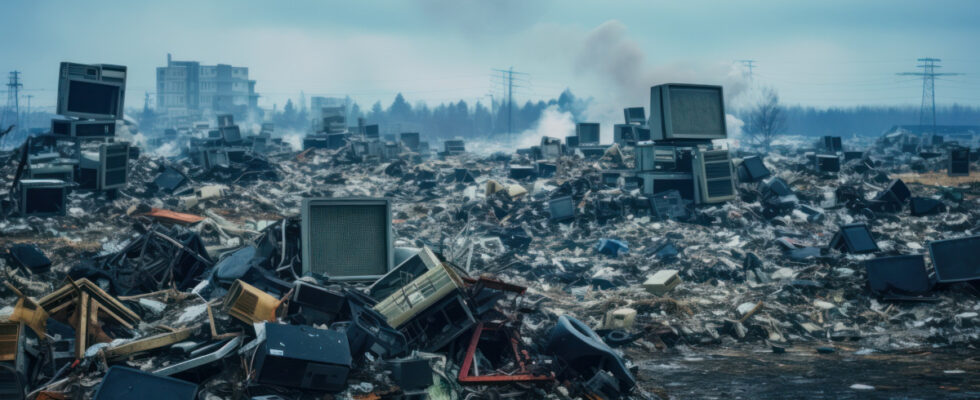
The end of technical support for Windows 10, scheduled for 2025, could cause a real environmental disaster. According to a study, millions of PCs incompatible with Windows 11 will be thrown into the wild. And this despite the implementation of an extensive support program by Microsoft.
The end of support for Windows 10, scheduled by Microsoft for October 14, 2025, marks a significant transition in the world of operating systems. This decision will result the obsolescence of millions of PCs, thereby increasing the risk of vulnerability to cyberattacks and exacerbating the already critical problem of e-waste. Obsolete PCs, made up of components non-biodegradable and sometimes toxicincompatible with Windows 11, represent a major environmental threat.
Read also – Every year we produce 9 billion tonnes of electronic waste
In response to these questions, Microsoft has renewed its paid Extended Security Updates (ESU) program for Windows 10 after 2025. This initiative, which follows that implemented for Windows 7, offers additional security updates. Only problem: you have to pay to join. Although this program can technically extend the lifespan of computers running Windows 10, the number of users willing to pay for these updates remains uncertain. This therefore suggests that many computers will become unusable and will contribute to electronic waste.
Millions of PCs will be thrown away because they will be Windows 10
These are indeed the conclusions of a study published by Canalys on the impact of the shutdown of Windows 10. According to the study institute, approximately 240 million PCs will become electronic waste by the end of support date of the operating system, due to their incompatibility with Windows 11. This quantity represents approximately a fifth of the world’s IT equipment. If we stacked all these laptops on top of each other, they would form a stack 4000 km long. For comparison, this would exceed the diameter of the moon by 600 km.
This observation occurs in a tense ecological context: million tons of electronic waste are already generated every year. The site of Agbogbloshie, Ghana, is a good example. He became infamous for mountains of electronic waste that it receives, causing major health and environmental problems. The announced accumulation of electronic waste, due to the obsolescence of PCs with the end of support for Windows 10, therefore adds to an already critical situation.
Source: Canalys
